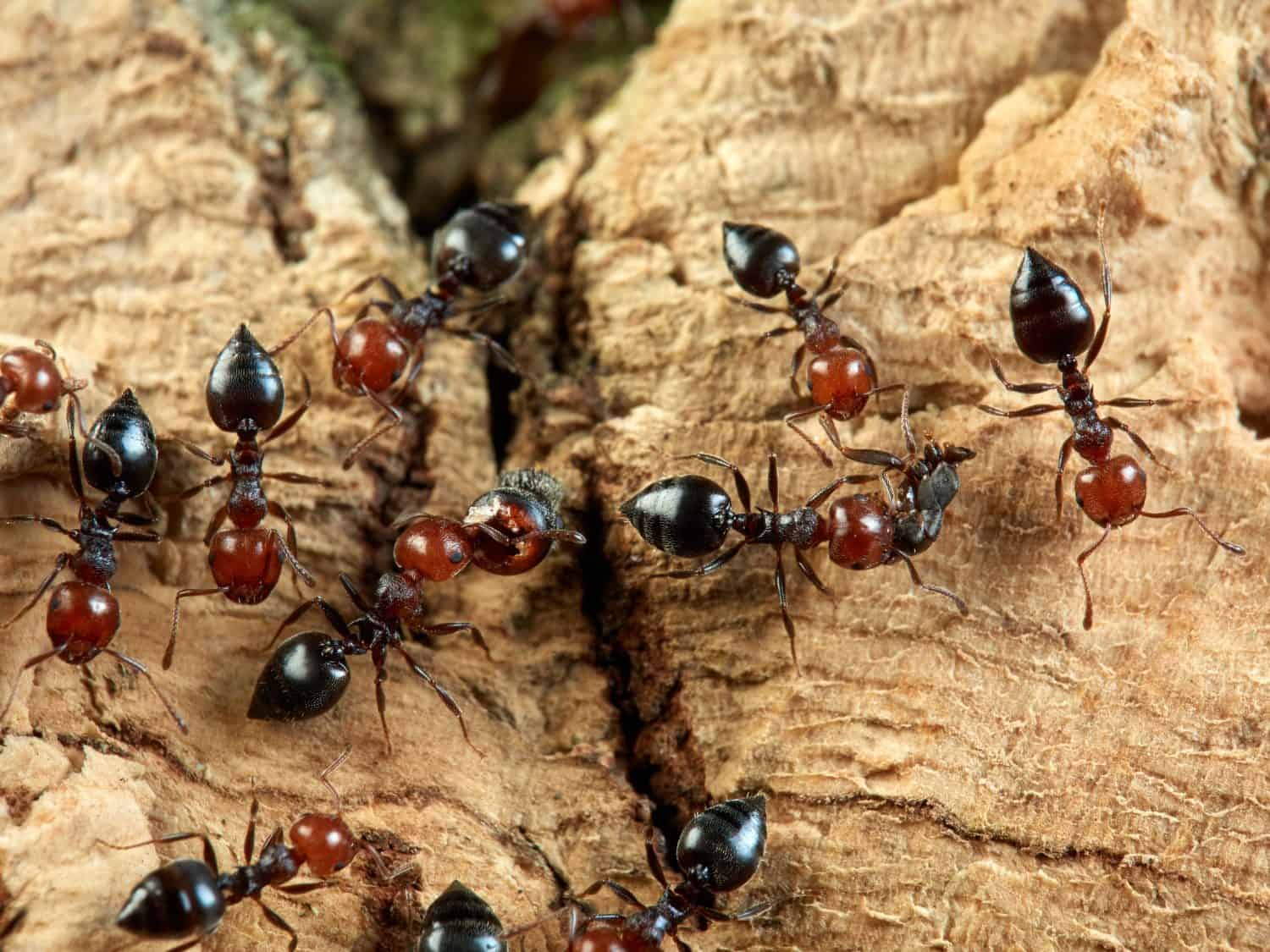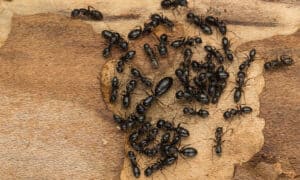Over 8,800 species of ants exist under the Formicidae family, and all of them are eusocial with complex social systems. Communication in ant colonies is essential for group defense, foraging, reproduction, identification, and navigation.
This guide will delve into how ants communicate to ensure colony survival and maintain group cohesion.
Read on to learn more!
How Ants Communicate: Chemical Signaling
A primary method of communication across all ant species is chemical signaling. Ants use a range of pheromones to signal alarm, identify each other, initiate nest defense, coordinate brood raising, and lead each other to food sources.

Chemical signaling is the primary method of communication across the vast range of ant species.
©Macronatura.es/Shutterstock.com
Alarm Pheromones
A study published in the research journal Cell revealed that ants likely have a dedicated communication center in the brain for processing alarm pheromone signals. This centralization in the brain for processing pheromones related to danger can result in an immediate collective response by hundreds or thousands of ants throughout the colony.
Trail Pheromones
To ensure successful navigation to and from foraging sites, ants leave chemical trails for each other to follow. This signal is known as a trail pheromone. Worker ants follow the trail secreted by the worker ahead. Once the food source runs out, the ants stop secreting the trail pheromone. This way, ants behind them know to stop following the path.
Identification Pheromones
Each colony produces a unique pheromone for colony-level identification. This allows soldier ants to confirm colony members as they return from foraging, preventing intruders from entering the nest.
Reproductive Pheromones
The chemical, undecane, acts as a reproductive pheromone for the queen of some species of ants, such as the redwood ant, Formica lugubris. Interestingly, this chemical is also a major component of alarm pheromones in worker ants of this species.
How Ants Communicate: Tactile Signals
Ants primarily use their flexible antennae to communicate with each other tactilely. When crossing paths, worker ants often stop and touch antennae to identify each other. The ants’ antennae contain olfactory receptors, allowing them to detect the pheromones of the other ants through touch. Ants are covered in a waxy layer of chemical compounds called cuticular hydrocarbons (CHCs). When ants touch antennae, they can identify whether an ant is part of their same colony by interpreting pheromones in the CHCs unique to specific nests.
In addition to using their antennae to identify each other, research suggests that they also use them to initiate action in another ant, move an ant out of the path, and solicit food. Ants that stay in the colony and don’t forage will often solicit food by touching their antennae to the mouth of a foraging ant. The ant then may regurgitate some of its food into the mouth of the other ant in a process called trophallaxis.

Ants use their highly sensitive antennae to identify one another and socially communicate.
©Andrey Pavlov/Shutterstock.com
How Ants Communicate: Vibrational Signaling
Finally, ants also communicate vibrationally through stridulation. Through this process, ants produce sound, perceived as vibrations by other ants, through rubbing together parts of their chitinous exoskeleton. The organ that produces these vibrations is microscopic and located between the rear and torso of the ant. Researchers have observed this vibrational communication during foraging, alarm signaling, and collective nest building.
The photo featured at the top of this post is © Ernie Cooper/Shutterstock.com
Thank you for reading! Have some feedback for us? Contact the AZ Animals editorial team.







